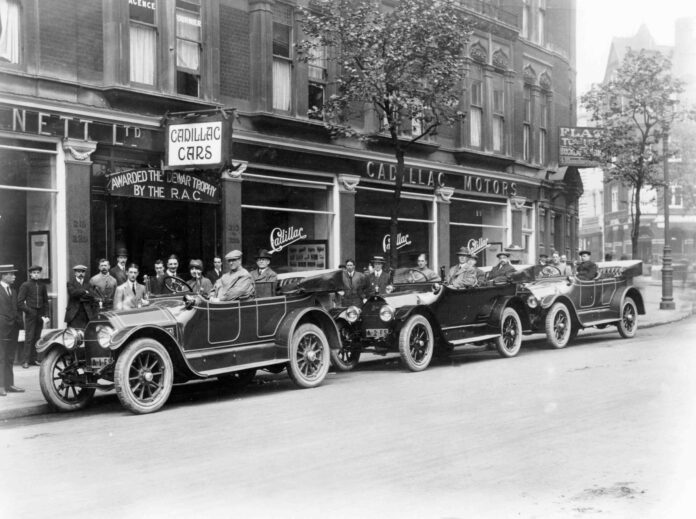Enjoy full access to the complete Autocar archive at the magazineshop.com
In 1927, GM transferred the UK Cadillac concession to Lendrum & Hartman, which opened a grand showroom in Mayfair, where the Type V-63 would be sold alongside GM’s lesser La Salle and Buick cars.
Two years later, Cadillac made another engineering innovation: a V16 engine for its new limousine. “It will certainly be one of the most interesting machines of recent years,” said Autocar as it “created quite a sensation in America”.
Little wonder Brits considered Cadillac as belonging to the highest echelon of brands, alongside Rolls-Royce. L&H may have sold only a handful of Cadillacs each year, but the buyers were aristocrats and celebrities – although the Prince of Wales ordered a Buick instead, as it came from his dominion of Canada.
L&H resumed selling new cars relatively promptly after World War II, and Cadillac embraced space-age styling in all its glory, chrome-plating its already glamorous image. Autocar first experienced one of these modern ‘Caddies’ in 1961, courtesy of L&H customer Joseph Bamford. The JCB founder had bought the world’s largest production car: the nine-seat, 6.2m-long, 2m-wide Fleetwood 75 limo.
“In almost every respect, its mechanical behaviour conforms with the highly civilised luxury of its appointments,” we reported. “It is always fascinating to sample the best that any country’s car industry can produce. Certainly the United States are well and truly represented with this fine Cadillac.” Bamford lent us several more of his L&H-supplied Caddies for road tests: Coupe de Villes of 1964 and 1968.
Impressive these may have been, but their enormous size and the unquenchable thirst of their 7.0-litre-plus V8s greatly diminished their appeal here, and so by the mid-1970s much of L&H’s business was funnelling cars to the Middle East.
The onset of Detroit’s ‘malaise era’ made the pitch even harder, but L&H persevered until January 1987 before succumbing to insolvency.
Cadillac surprisingly returned in spring 1998, wisely selling a small, FWD saloon but unwisely doing so via Vauxhall dealers. Worse still, the Seville STS was well below class standards: we deemed it the worst car we drove that year. Sales were dismal, so Cadillac gave up in 2002.
